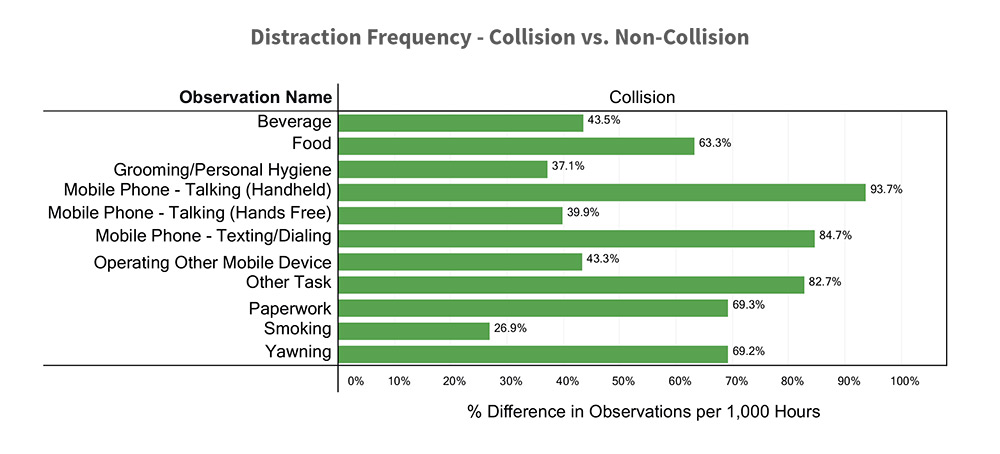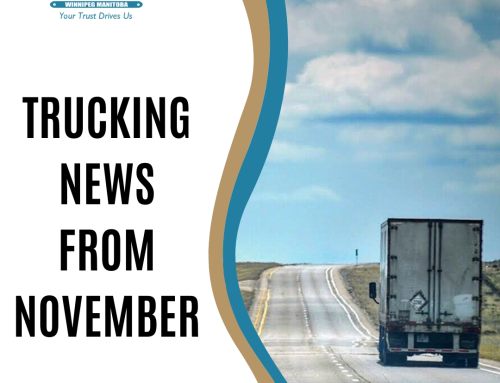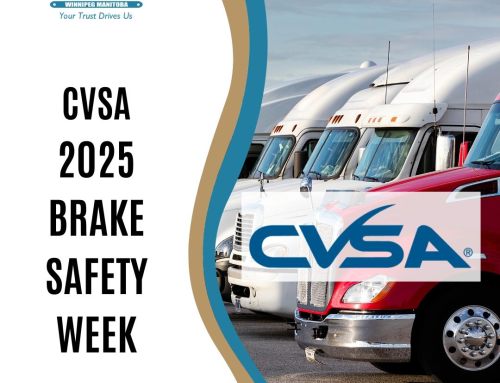Typically when we think of distracted driving, we think of people talking or texting. While this does make up the largest percentage of distracted driving there are many forms of distractions that lead to unsafe driving conditions.
The SmartDrive Distracted Driving Snapshot for Trucking illuminates key observations about distracted driving and a verified measurement of specific distractions that are making our roads unsafe. In particular, the Study compares the Most Distracted Drivers to all other drivers and the explicit risks that mobile devices present when operating commercial vehicles.
The study examined 11 categories of distraction and concluded that collision drivers have higher distraction rates than non-collision drivers in all categories.
The study goes on to identify 9 tips for drivers to eliminate distracted driving.
1. Focus: Fully focus on driving. Do not let anything divert your attention, actively scan the road, use your mirrors and watch out for pedestrians and cyclists
2. Emergencies: Use your cell phone for emergency situations only. While you’re driving, a cell phone should only be used for emergency purposes. Even then, it’s best to pull over safely to the right shoulder to make a call. Even hands-free devices can still cause you to miss important visual and audio cues needed to avoid a crash.
3. Drowsy Driving: If you are drowsy, pull off the road. Drowsiness increases the risk of a crash by nearly four times. A government study showed that 37 percent of U.S. drivers have nodded off or actually fallen asleep at least once during their driving careers. If you feel tired, get off the road; don’t try to get home faster.
4. Multi-Tasking: Do your multi-tasking outside the truck. Everyone spends a lot of time in their vehicles, and it may seem like the perfect time to get little things done: calling friends, searching for good music, maybe even text messaging. Don’t do it. Focus on the road and the drivers around you. Get everything settled before you start driving.
5. Storage: Store loose gear, possessions and other distractions that could roll around in the truck, so you do not feel tempted to reach for them on the floor or the seat.
6. Adjustments: Make adjustments before you begin your trip. Address vehicle systems like your GPS, seats, mirrors, climate controls and sound systems before hitting the road. Decide on your route and check traffic conditions ahead of time.
7. Dressing: Finish dressing and personal grooming at home – before you get on the road. 8. Snacking: Snack smart. If possible, eat meals or snacks before or after your trip, not while driving. On the road, avoid messy foods that can be difficult to manage.
9. Other Tasks: If another activity demands your attention, instead of trying to attempt it while driving, pull off the road and stop your vehicle in a safe place. Drivers should use caution while using voice-activated systems, even at seemingly safe moments when there is a lull in traffic or the truck is stopped at an intersection, because potentially dangerous distractions can last longer than most drivers expect.
Remember, any task that diverts your attention away from the road is a distraction that could potentially lead to an accident.
Source: SmartDrive





